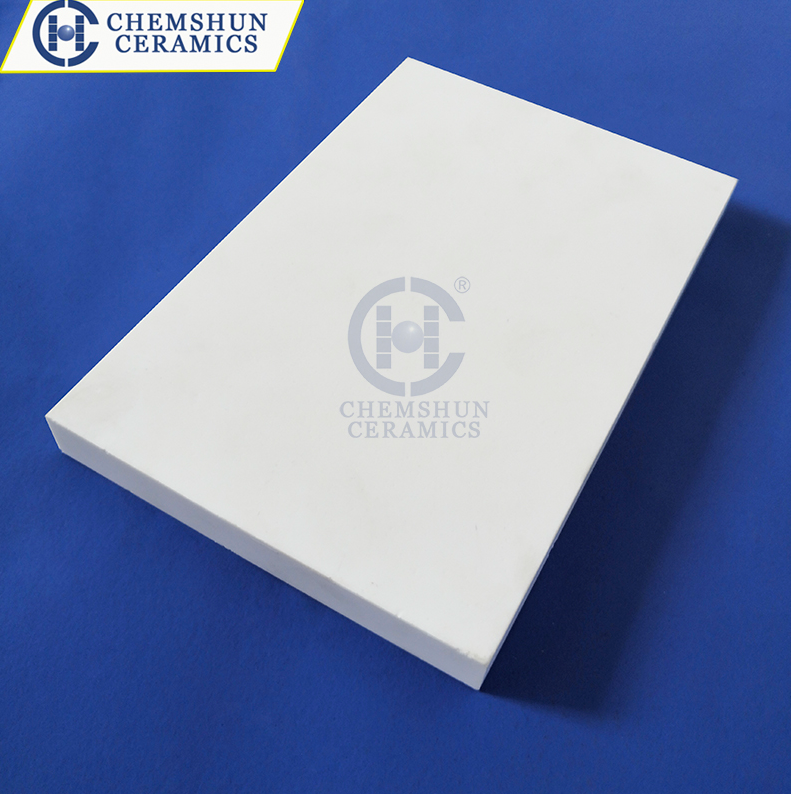Top articles
- High-purity 99.7% alumina ceramics helpful to semiconductor manufacturing technology
- Alumina Ceramic Grinding Balls: High-Efficiency Solutions for Industrial Grinding
- How to Select Suitable Wear-Resistant Ceramic Lining Tiles in the Mining Industry
- Advantages of Ceramic Rubber Composite Liners in Industrial Applications
- How to Install Alumina Ceramic Liners for Long-Lasting Adhesion?
- 99% alumina bulletproof ceramics are the preferred materials for protective devices
- Alumina Ceramic Substrates:Characteristics,Advantages,Disadvantages,and Applications
- Why do alumina industrial ceramics wear out?
- The reason of abrasion resistant ceramic tiles falling off when pasted on equipment
- Seven aspects of advantages & applications of alumina ceramic substrates
Latest articles
- High-purity 99.7% alumina ceramics helpful to semiconductor manufacturing technology
- Alumina Ceramic Grinding Balls: High-Efficiency Solutions for Industrial Grinding
- How to Select Suitable Wear-Resistant Ceramic Lining Tiles in the Mining Industry
- Advantages of Ceramic Rubber Composite Liners in Industrial Applications
- How to Install Alumina Ceramic Liners for Long-Lasting Adhesion?
- Welcome to EXPOMIN 2025
- 99% alumina bulletproof ceramics are the preferred materials for protective devices
- Alumina Ceramic Substrates:Characteristics,Advantages,Disadvantages,and Applications
- Why do alumina industrial ceramics wear out?
- Chemshun Ceramics Chinese New Year Holiday Notice
Your browsing history

Will The Yellowing of Alumina Wear-resistant Ceramics affect Product Performance?
1. Decreased aesthetics
After alumina wear resistant ceramics turn yellow, their appearance no longer maintains the original whiteness or specific color, but presents a light yellow or darker color. This color change directly affects the aesthetics of the product. For industrial products or decorative ceramic products that focus on appearance quality, the decline in aesthetics may be an important issue.
2. Reduced mechanical properties
Yellowing may mean that the internal structure or composition of alumina ceramics has changed to a certain extent. This change may cause the mechanical properties of the ceramics, such as hardness, wear resistance and impact resistance, to decline. In practical applications, the reduction of these properties may affect the service life and stability of the ceramics, especially in situations where they need to withstand harsh working conditions such as high wear and high impact.
3. Reduced thermal stability
Alumina ceramics usually have good stability in high temperature environments, but yellowing may mean that their thermal stability has been affected to a certain extent. Yellowed ceramics may be more prone to cracking, deformation and other problems at high temperatures, thereby affecting their use effect under high temperature conditions.
4. Changes in corrosion resistance
Although alumina ceramics themselves have strong acid, alkali and chemical corrosion resistance, yellowing may mean that their surface or internal composition has changed, and this change may have a certain impact on the corrosion resistance of the ceramic. The specific degree of impact depends on the cause and degree of yellowing, but in general, any factor that causes a change in material properties may have an adverse effect on its corrosion resistance.
5. Changes in insulation properties
For some high-purity alumina ceramics, their insulation properties are an important performance indicator. Yellowing may mean an increase in impurity content or structural changes inside or on the surface of the ceramic, and these changes may have a certain impact on the insulation properties of the ceramic. However, it should be noted that not all alumina ceramics are used in insulation applications, so this effect may not apply to all products.
In summary, the yellowing of alumina wear-resistant ceramics will have a certain impact on its aesthetics, mechanical properties, thermal stability, corrosion resistance and insulation properties. Therefore, during use, care should be taken to avoid factors that cause ceramics to turn yellow, such as long-term sunlight exposure, humid environment, etc., and regular maintenance and care should be performed on the ceramics to extend their service life and maintain their performance.









